
Bromus hordeaceus, the soft brome, is an annual or biennial species of grass in the true grass family (Poaceae). It is also known in North America as bull grass, soft cheat, and soft chess.

Glyceria is a widespread genus of grass family common across Eurasia, Australia, North Africa, and the Americas.
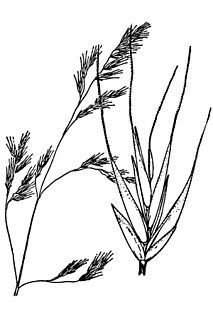
Festuca occidentalis is a species of grass known as western fescue. It is native to much of the northern half of North America and is most widely distributed in the west. It is most often found in forest and woodland habitat. The specific epithet occidentalis is Latin, meaning "western".

Bromus madritensis is a species of brome grass known by the common name compact brome. The specific epithet madritensis refers to Madrid, Spain. It has a diploid number of 28.
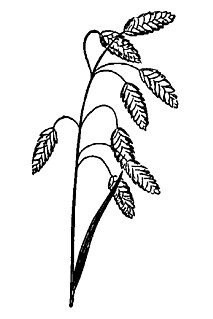
Bromus briziformis is a species of brome grass known by the common name rattlesnake brome. The specific epithet briziformis comes from the resemblance of the grass to grasses of the genus Briza, particularly Briza maxima. The common name is derived from the resemblance of the spikelets to the rattles of rattlesnakes. The grass has a diploid number of 14.

Bromus catharticus is a species of brome grass known by the common names rescuegrass, grazing brome, prairie grass, and Schrader's bromegrass. The specific epithet catharticus is Latin, meaning cathartic. The common name rescuegrass refers to the ability of the grass to provide forage after harsh droughts or severe winters. The grass has a diploid number of 42.

Bromus kalmii, the Arctic brome or prairie brome, is a species of brome grass. It is a native bunchgrass in the North-central and Northeastern United States, the Great Lakes region, and eastern Canada. The specific epithet kalmii refers to its discoverer Pehr Kalm.
Melica porteri, known as Porter's melicgrass, is a species of grass that grows in the United States and Mexico. In the US it is found in Arizona, Colorado, Kansas, New Mexico, Texas, Utah, and Iowa.
Melica radula is a species of grass endemic to China. It grows on grassy mountain slopes and larch forests at 300–1,200 metres (980–3,940 ft) above sea level.

Bromus nottowayanus, the Nottoway Valley brome or satin brome, is a brome grass native to North America. The specific epithet nottowayanus refers to the Nottoway Valley. The grass has a diploid number of 14.

Bromus japonicus, the Japanese brome, is an annual brome grass native to Eurasia. The grass has a diploid number of 14.
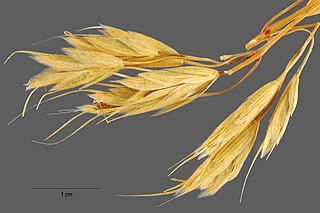
Bromus squarrosus, the rough brome, is a brome grass native to Russia and Europe. The specific epithet squarrosus is Latin, meaning "with spreading tips". The grass has a diploid number of 14.

Festuca brachyphylla, the alpine fescue, is a grass native to Eurasia, North America, and the Arctic. The grass is used for erosion control and revegetation. The specific epithet brachyphylla means "short-leaved". The grass has a diploid number of 28, 42, or 44.
Bromus pacificus, the Pacific brome, is a perennial grass native to the Pacific coast of North America. Bromus pacificus has a diploid number of 28.

Glyceria canadensis is a species of grass in the genus Glyceria which is known by the common name rattlesnake mannagrass. It is native to North America, from British Columbia to Newfoundland and south to North Carolina. It is commonly found in wet areas.
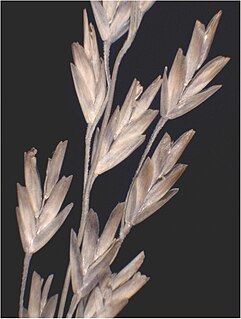
Puccinellia fasciculata, or Borrer's saltmarsh grass, is an annual grass native to coasts of Europe and introduced to the northern east coast of North America. Its diploid number is 28.
Puccinellia macra is a perennial grass which grows on the coasts of south-eastern Canada. Its specific epithet "macra" means large, referring to its tall stature.
Glyceria acutiflora, the creeping mannagrass, is a perennial grass found in the north-eastern United States and in north-eastern Asia. Its specific epithet acutiflora means "acute-flowered". It has a diploid number of 40.
Poa subcaerulea is a perennial grass occurring in North America and Europe. Its specific epithet "subcaerulea" means "bluish". Its diploid number varies between 54 and 109.
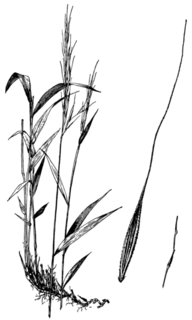
Brachyelytrum erectum, known as the southern shorthusk or the southern long-awned woodgrass, is an annual grass native to North America. Its specific epithet "erectum" refers to the erect culms of the grass. Its diploid number is 22.














